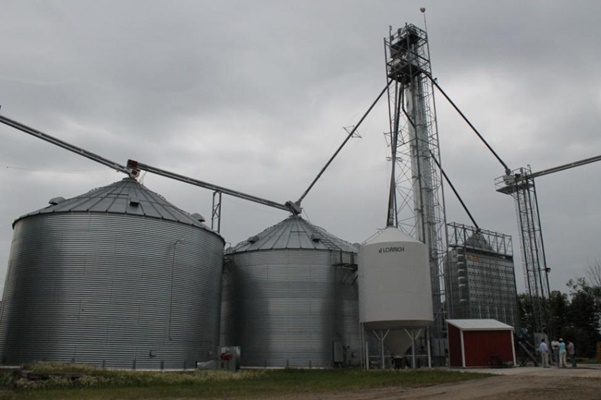
EVANSVILLE, Ind., Feb. 19 (UPI) — Agricultural experts worry that millions of bushels of stored soybeans awaiting the end of the U.S. trade war with China could spoil before a settlement occurs.
At highest risk are beans stored in North Dakota. Farmers there and in surrounding states rarely keep large quantities of beans long after harvest. Most are sold directly to China. But China’s high tariffs on American soy has left beans in that region with nowhere to go but grain bins.
“That’s not something that happens overnight,” said Ken Hellevang, an agricultural engineer at the North Dakota State University’s extension office. “But over time, you can have major spoilage issues occurring.”
Hellevang is doing what he can to educate farmers about the best ways to store grain in warm weather.
“I’m trying to get the word out,” he said. “This is a new experience for them.”
Although soy growers across the Midwest are struggling to sell their crops, it’s the growers in North Dakota and surrounding states who have been most severely impacted. That region has direct rail access to ports in the Pacific Northwest, from which ships set sail for China. So the vast majority of beans from the Dakotas are earmarked for China — more so than from any other U.S. region.
China consumes huge quantities of soy and purchases about 30 percent of all the beans grown in the United States, mostly to feed livestock, according to U.S.government statistics.
This trend grew over the last decade. China went from importing few beans in the early 1990s to becoming the world’s largest buyer. In 2017, it imported more than twice as much soy as the 10 other top soy-consuming nations combined, U.S. Department of Agriculture figures show.
To meet the explosive demand, U.S. farmers grew more soy. The production value of the crop exceeded $41 billion in 2017, according to the American Soybean Association.
A lot of the growth occurred in the Upper Midwest. In 2000, North Dakota produced 61 million bushels of soybeans, according to the Soy Transportation Coalition. In 2017, the state produced 240 million bushels — nearly all of it bound for China.
“More than 70 percent of our soybeans are exported to China,” said Nancy Johnson, the executive director of the North Dakota Soybean Growers Association. “We have a fabulous system for getting soybeans on trains to the Pacific Northwest. With [the China] market closed, it’s been hard. There are certainly a lot of soybeans on the farm in storage, which is atypical.”
The main issue with storing beans over the summer is the moisture content of the beans, Hellevang said.
Ideally, most farmers try to keep their beans at a 13 percent moisture level, which is fine over the winter. But the beans should have a lower moisture content for storage during warm weather, he said.
To make matters worse, many of the beans being stored in North Dakota now have a much higher moisture level, Hellevang said, noting that it had been an abnormally wet fall. Some beans have moisture levels between 15 and 20 percent.
“We have soybeans at 15 percent moisture and I’m concerned about them,” said Ron Van Bruggen, a North Dakota soy grower who is storing beans on his farm. “We had snow this fall, and it was too wet to wait for Mother Nature to dry them out.”
Methods exist for drying beans to prepare for long-term storage, Hellevang said. But even if farmers can do that, the beans should be stored in temperature-controlled, steel grain bins. And because there was so much excess soy last fall, not all the beans could be fit in those traditional bins. Some farmers keep their beans in simple grain bags lying on the ground.
“These bags do well storing grain in the cooler months, but there is no way to manage the beans as the temperature warms,” Hellevang said.
Ultimately, farmers hope for a swift end to the trade conflict, which would enable them to sell their stored grain before next fall’s harvest.
The U.S. and China are negotiating a trade deal, with a March 1 deadline to reach an agreement before a new round of tariffs goes into effect.



